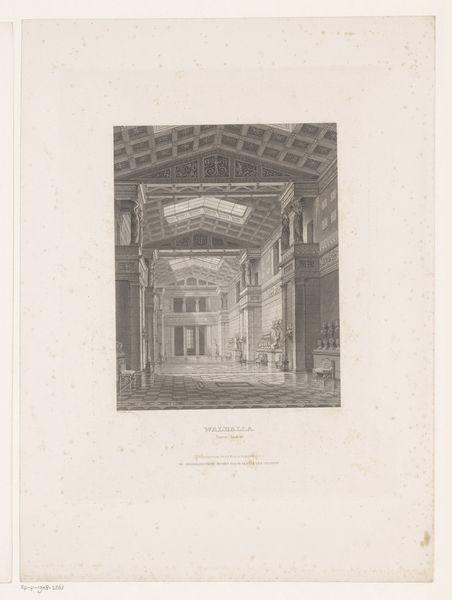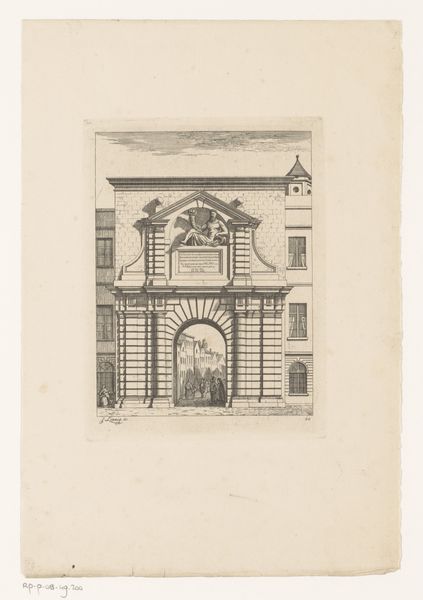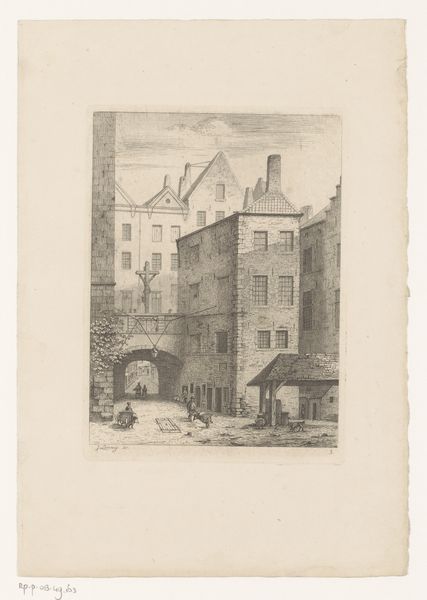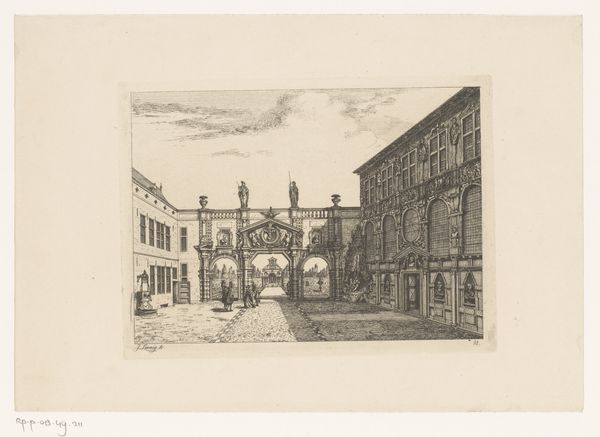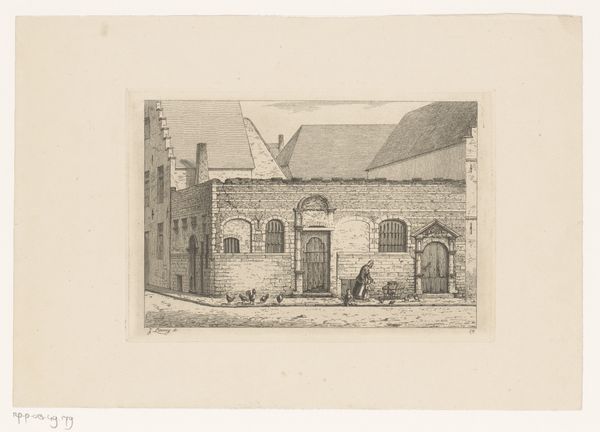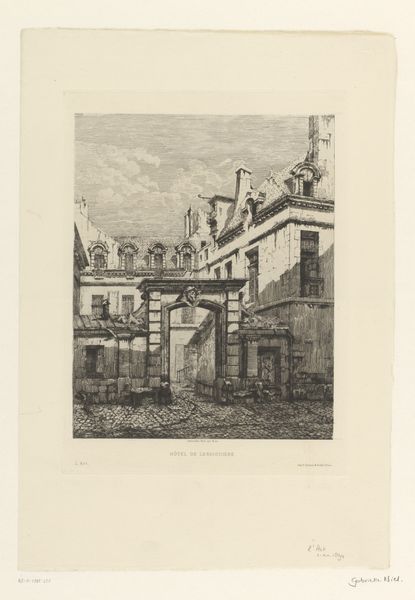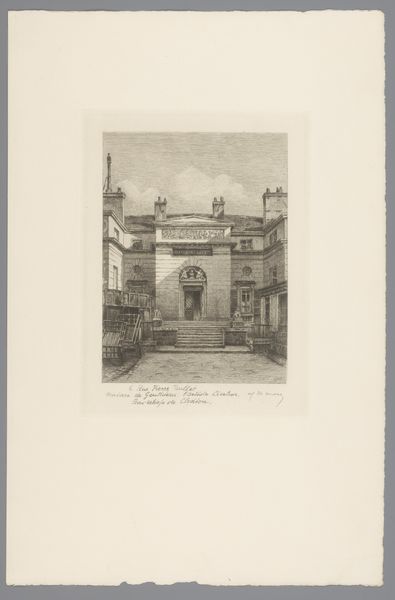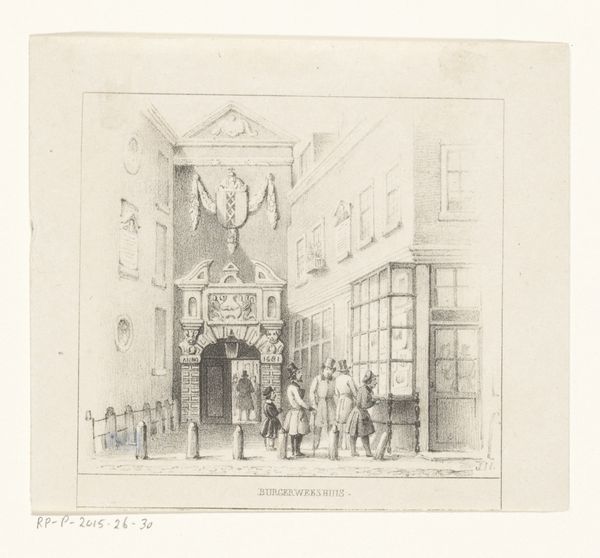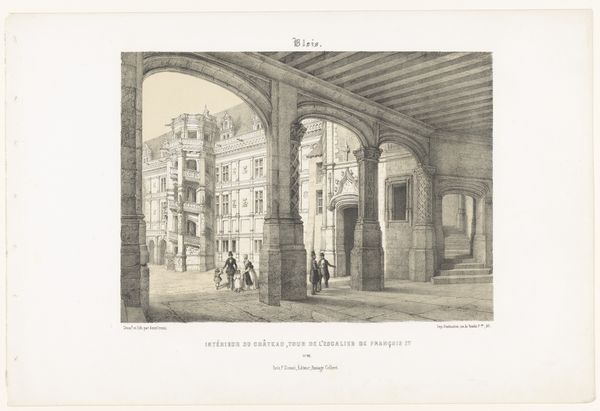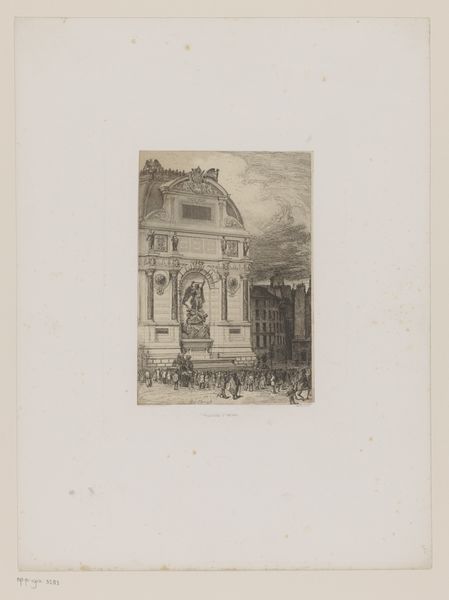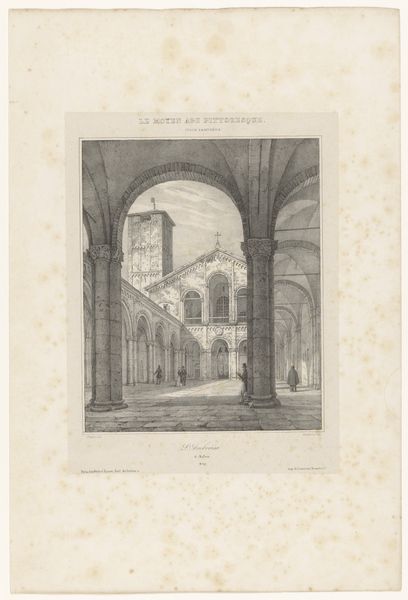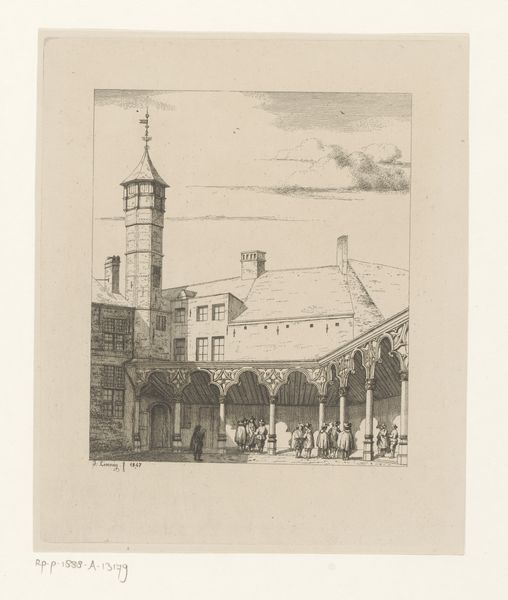
drawing, print, engraving, architecture
#
drawing
# print
#
old engraving style
#
historical photography
#
romanticism
#
cityscape
#
engraving
#
architecture
Dimensions: height 229 mm, width 262 mm
Copyright: Rijks Museum: Open Domain
Curator: This engraving by Augustus Wijnantz, dating from the mid-19th century, between 1830 and 1848, captures the Amsterdam Stock Exchange. The details of the architecture are impressive, particularly for a print. Editor: It strikes me as a stage, almost theatrical. The shadows are stark, and the building has this looming, almost forbidding quality despite being bathed in light. It’s grand but cold. Curator: That contrast is central, I think. This was a period of immense social change, as capitalist systems were solidifying power. Structures like the Beurs, the Stock Exchange, both facilitated and symbolized this shift, solidifying class divides. How do those shadowed spaces speak to the invisible structures of capitalism, creating inequality? Editor: Yes, and consider how the image is composed. We’re positioned at an oblique angle, almost as outsiders peering in, separated by the ornate gates. The architecture becomes a kind of visual code, a language understood by some and alienating to others. The gates themselves almost form a symbolic barrier of entry to economic prosperity for the general population, with few people present and almost no implied activity. Curator: The imagery, too, hints at deeper narratives. Consider the coat of arms adorning the building. Those heraldic devices were traditionally associated with power and privilege, here co-opted by a financial institution. Whose power and privilege were enhanced, and at whose cost? We must ask who benefits. Editor: It's almost as if the artist has presented us with a scene laden with potential for narratives—small dramas unfolding in the foreground against this monumental backdrop. The light emphasizes these details, pulling your eye to different centers of interest within the print. Curator: And think about Romanticism and its engagement with the aesthetics of sublime power. But that's usually attached to nature, while this connects it to the financial realm. We might discuss the transition from aristocratic to economic forms of power and privilege. The stock exchange assumes that aura. Editor: Right, this engraving almost performs that transition before our eyes. Well, I appreciate how the artwork provides a space for considering how physical buildings cement political concepts into cultural memory. Curator: Indeed. Thinking through this image allows us to confront the ways institutions embed their ideology in urban landscapes.
Comments
No comments
Be the first to comment and join the conversation on the ultimate creative platform.

